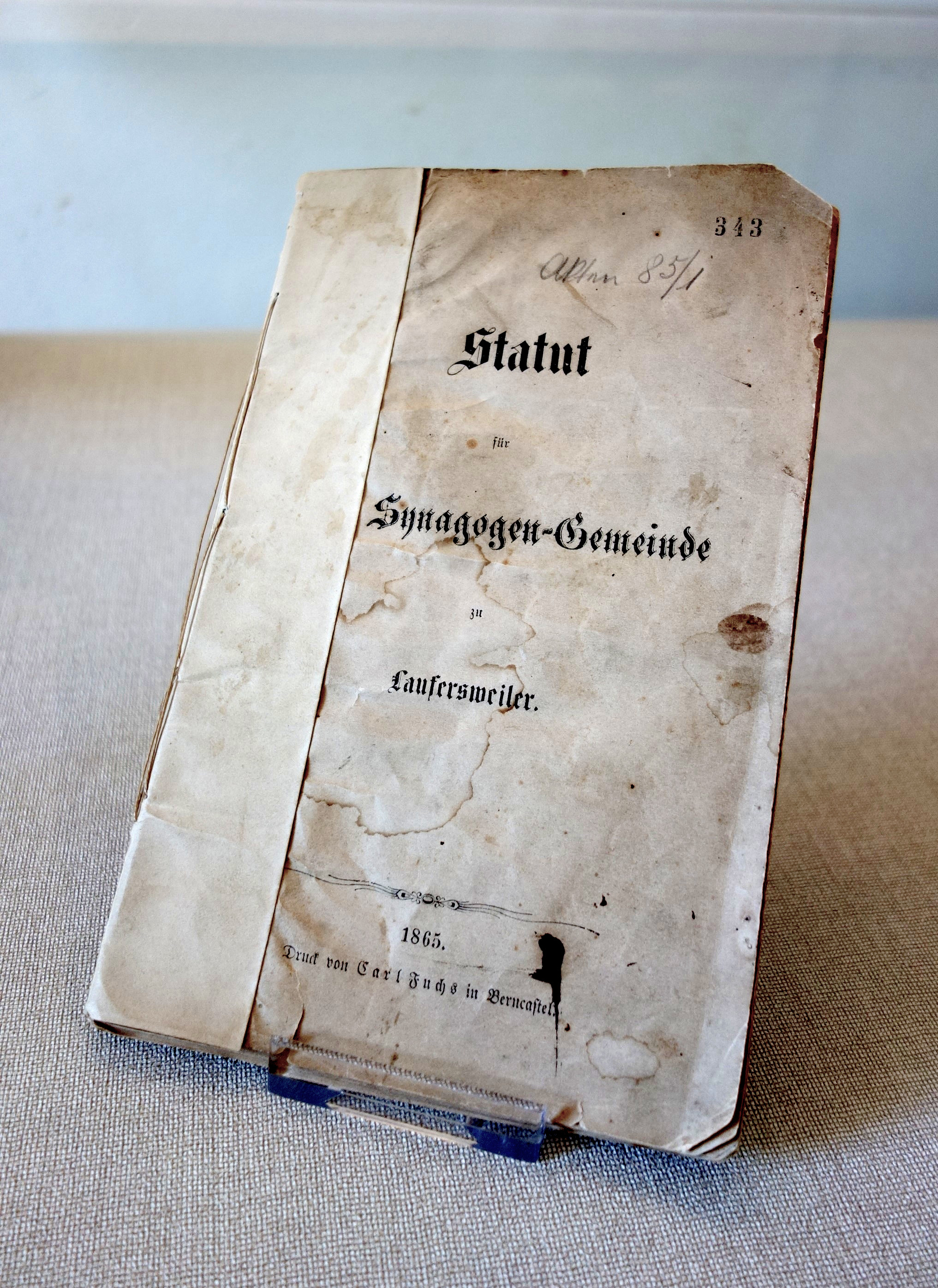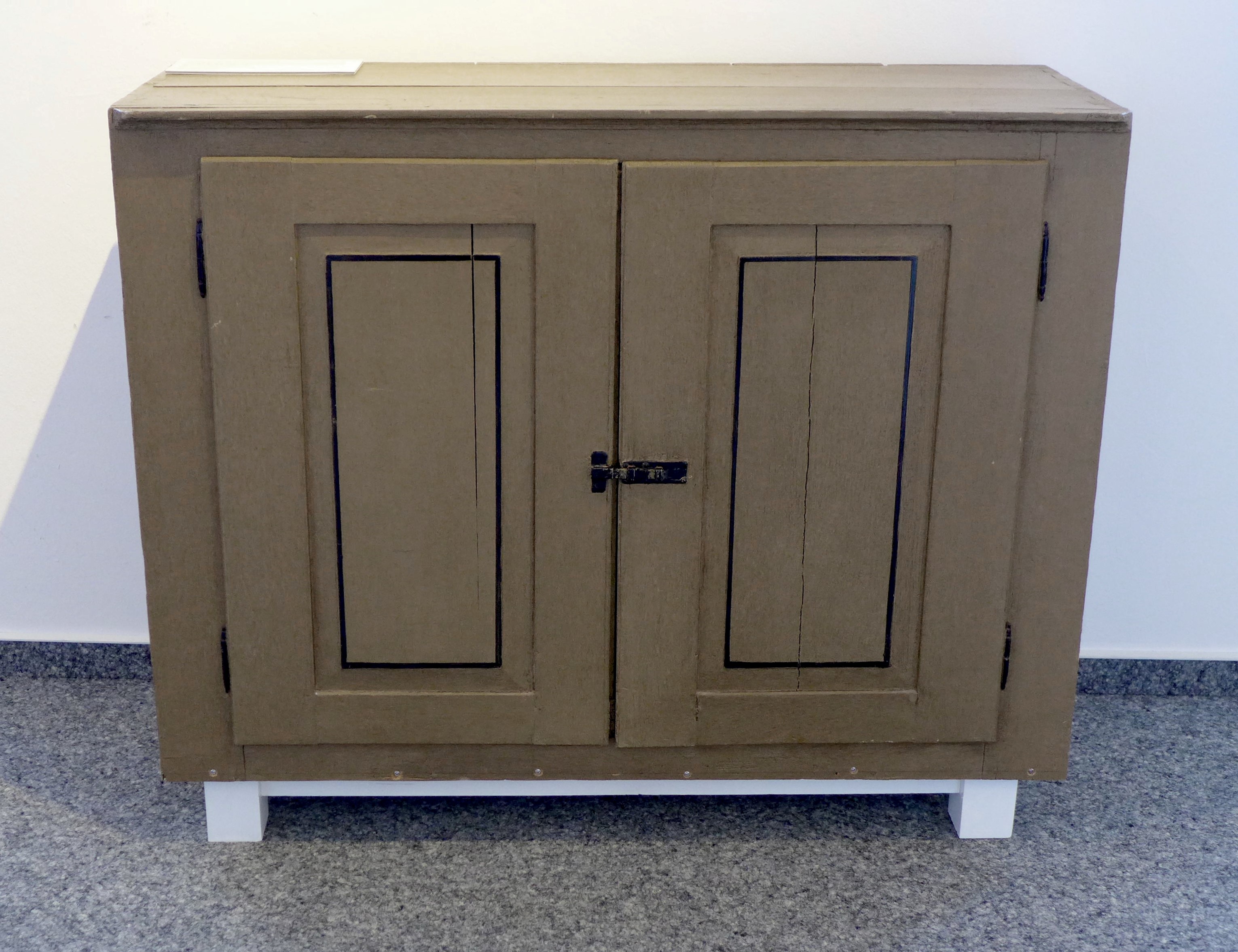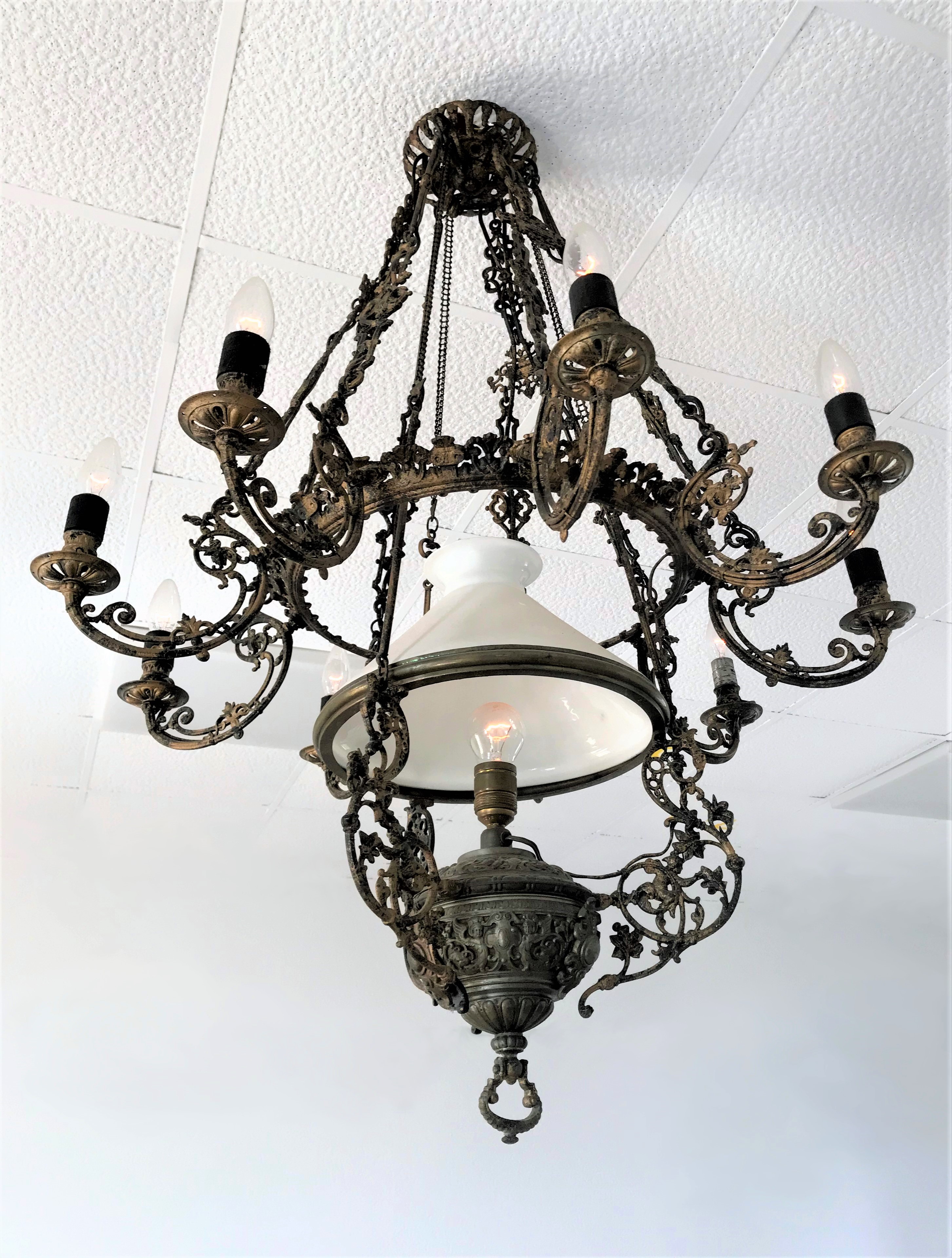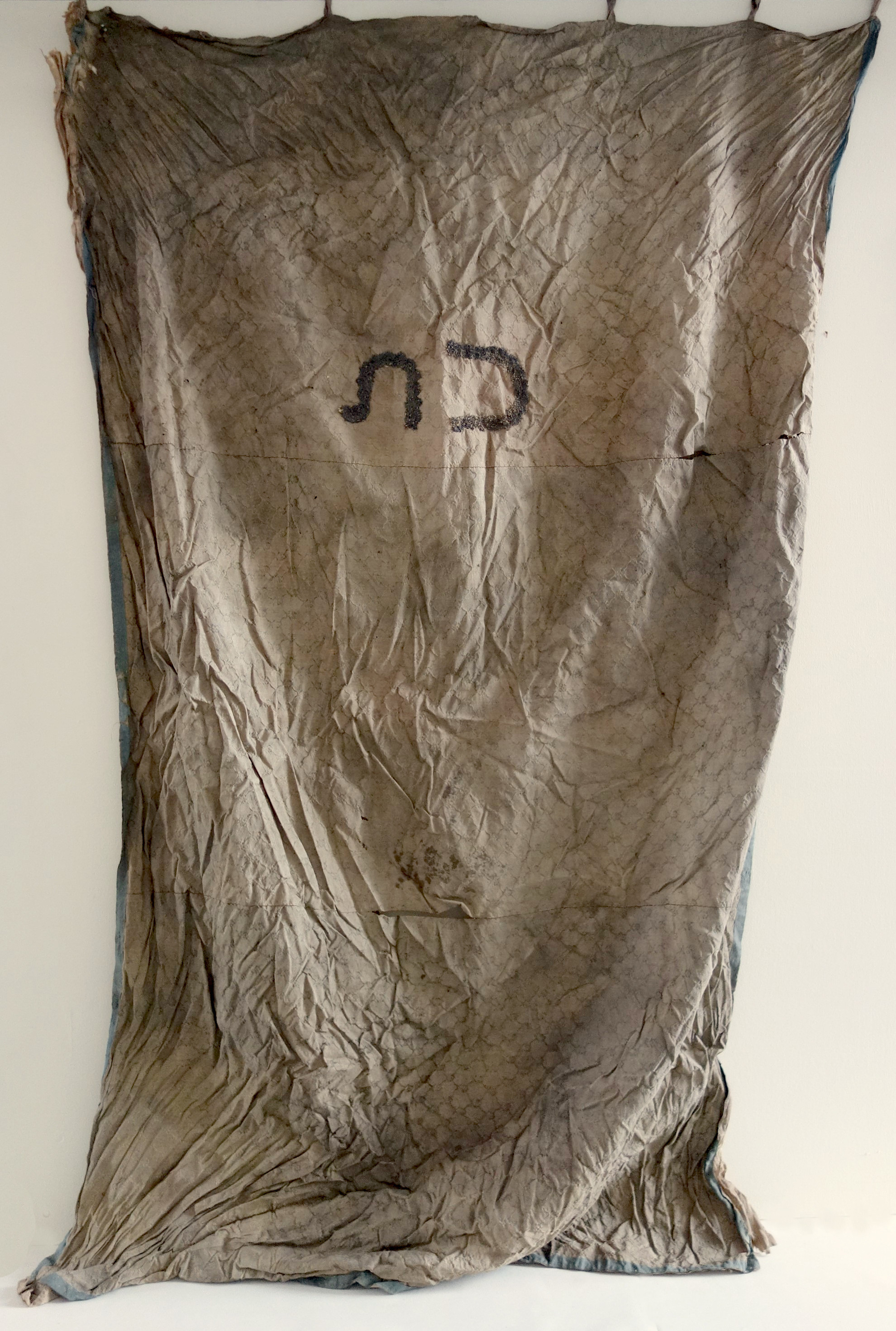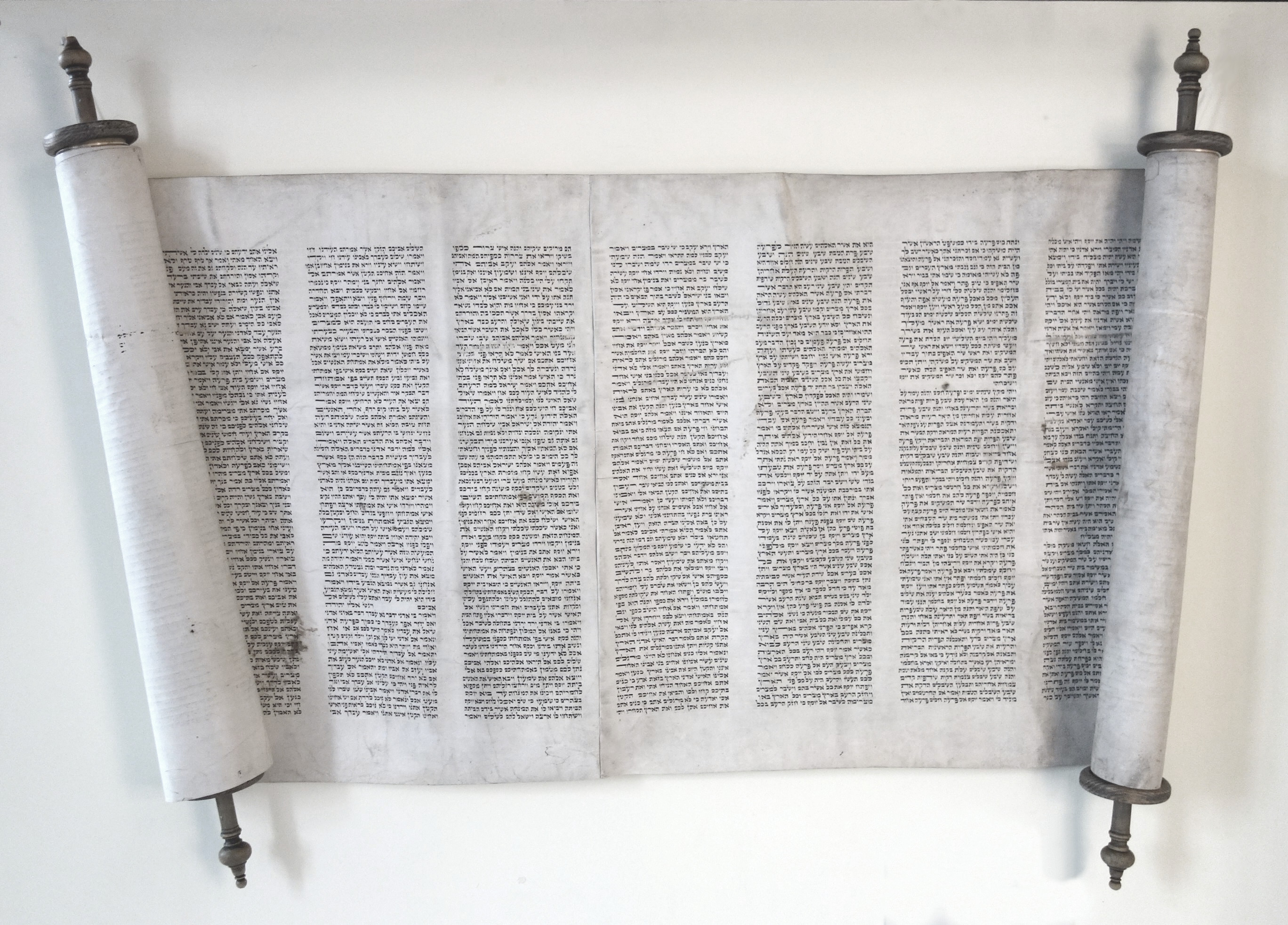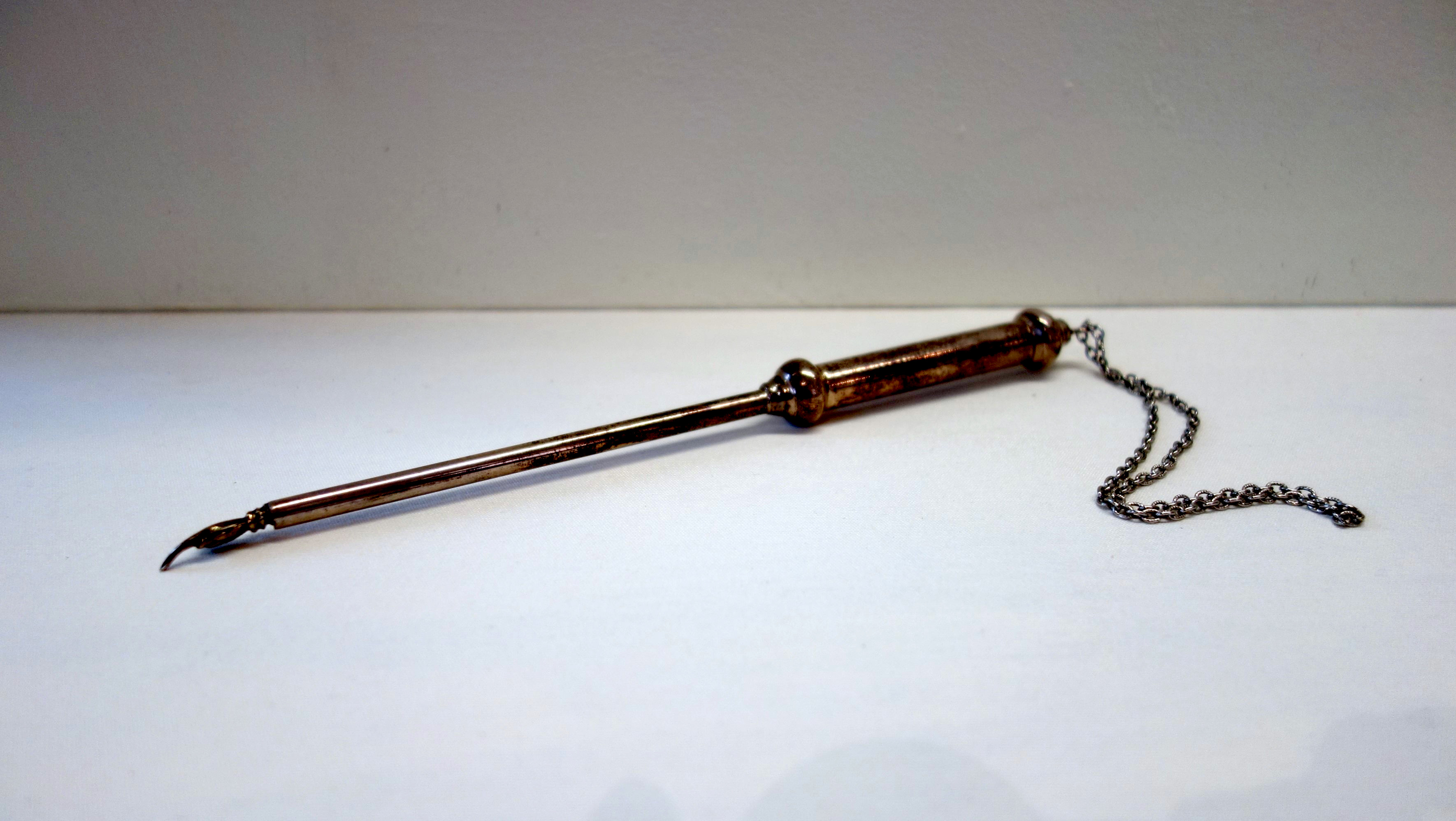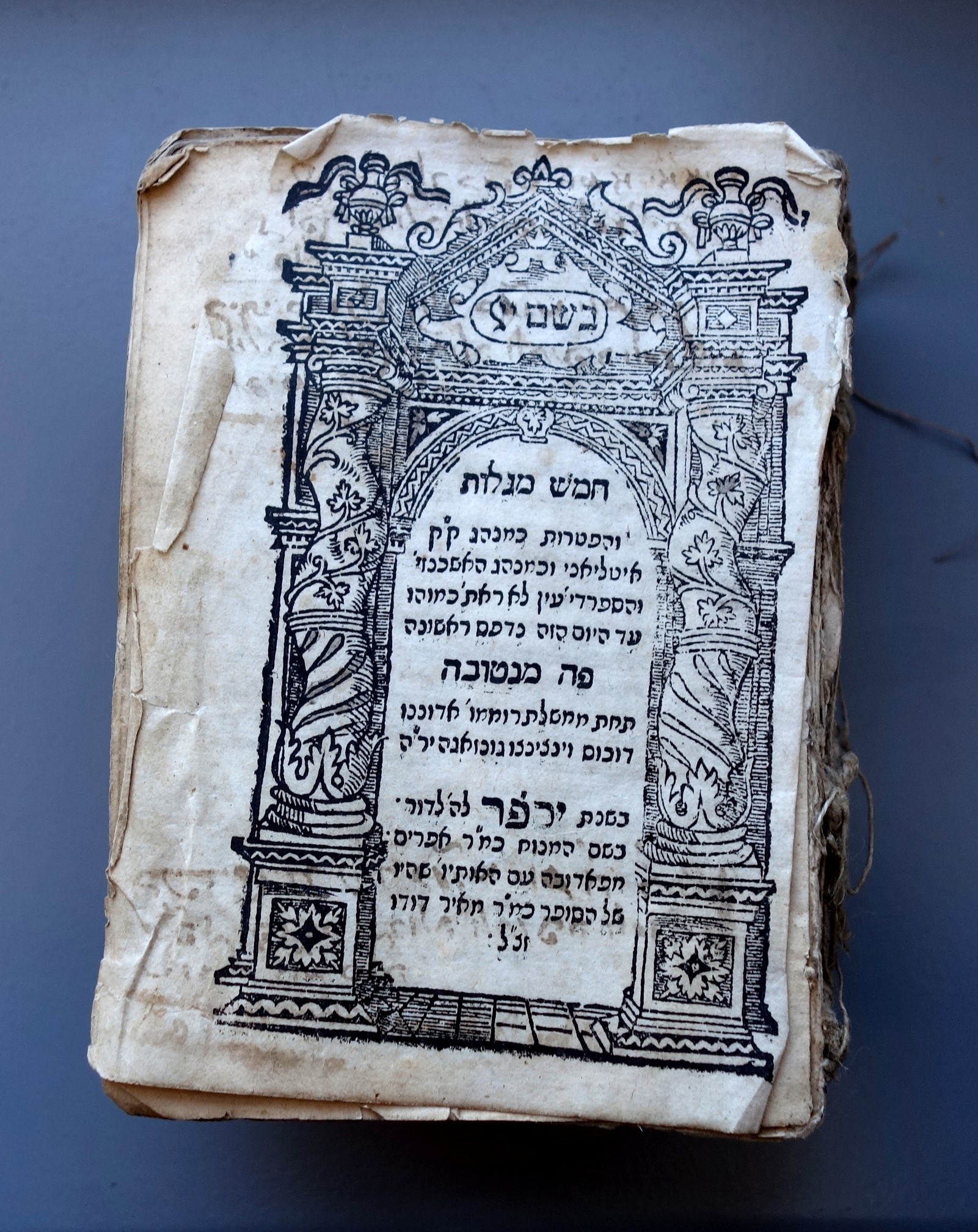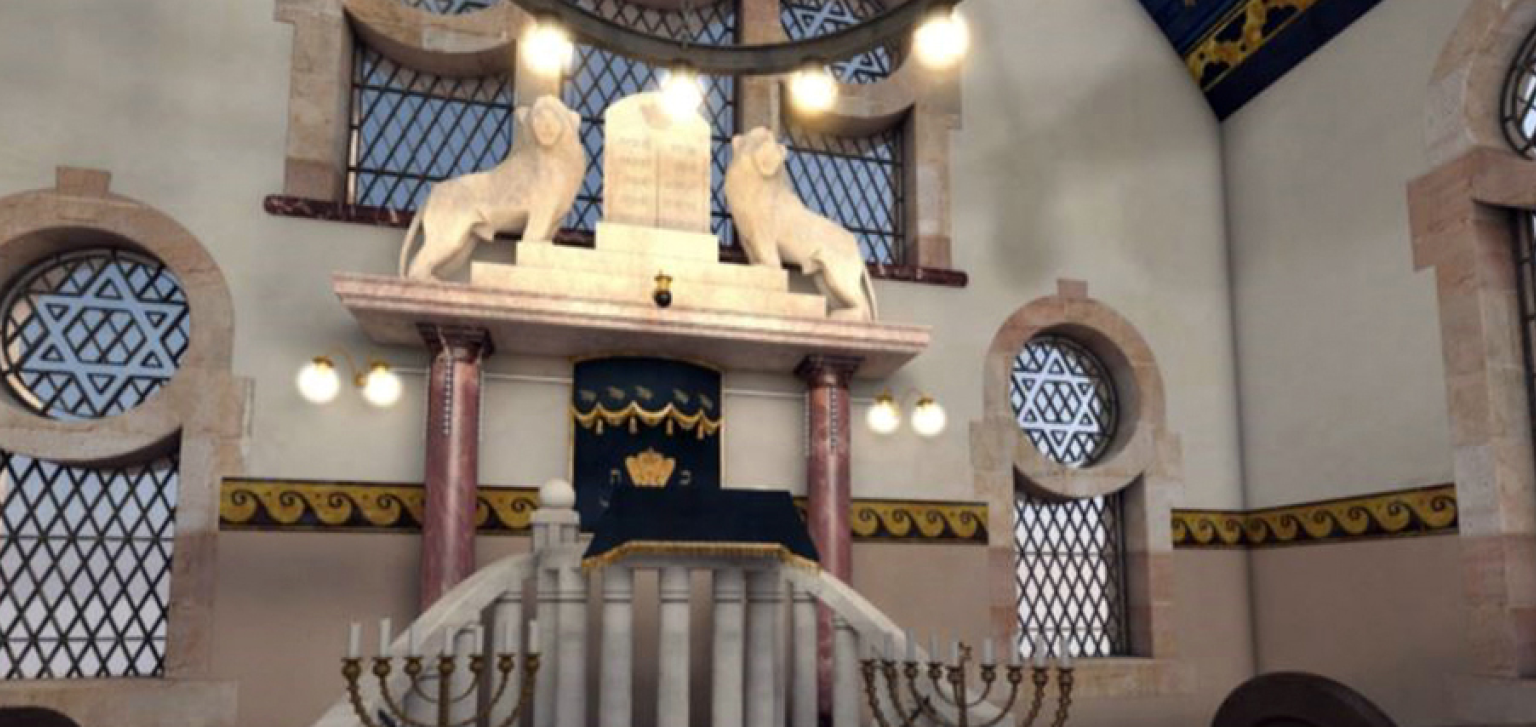
The most important religious institutions in the Jewish community are the synagogue, the cemetery and the Mikveh - the ritual bath of immersion. Over the course of time, the synagogue served a threefold purpose: It was not only a place of prayer, but also of learning and of encounter. The Jews built synagogues everywhere they settled after being driven out by the Romans, thereby retaining their Hebrew language, their religious rituals and their Jewish values. In so doing, they kept their religion alive.
The Minyan
The term Synagogue comes from the Greek language and means „association“ or „assembly“. In the broadest sense, any place where a so-called „Minyan“ comes together for the reading of the Torah is a synagogue. The Minyan is depicted as an assembly of ten religiously mature Jewish men (many reformed fellowships also include women) who come together for prayer. This fellowship is not dependent on the presence of a rabbi, because every Jew is permitted to read out of the Torah or lead prayer, which constitutes a worship service. The widespread autonomy of these religious assemblies facilitated the formation of small fellowships in many Hunsrück villages. As long as enough men gathered together, the worship service could be held in a residential house or even in a simple prayer room.
„A rabbi was never present during the worship services. You could say that the Jewish communities got along quite well in the village and small town communities without rabbis. The rabbi from Kreuznach was responsible for the Jewish fellowships in our region, and he was only called in to deal with serious religious problems.“
The communities in today’s Rhine-Hunsrück district did not employ a permanent rabbi for any length of time during the 19th and 20th centuries. Rabbi Hirz Kann (1771-1836) lived in Hottenbach (the district of Bernkastel - today Birkenfeld - from 1815 to 1969) until 1820, from where he supported the Jews in Idar-Oberstein. The worship services were usually accompanied by a religious teacher, who commonly served as the kosher butcher (shohet) and cantor (hazzan), as well, or was a member of the community who had a good voice.
Following the pogroms of the Middle Ages and the expulsion from the cities, the Minyan assembled especially in private homes. The first synagogues appeared in the Hunsrück in the later period of rural Jewish life, which included the synagogue in Hottenbach in 1796. They represented a large financial commitment from the communities and, as such, remained outwardly inconspicuous until around 1900. The synagogues were often converted from farm buildings ("barn synagogues"). The construction of synagogues for that specific purpose flourished around the middle of the 19th Century. The splendid synagogues in Laufersweiler and Simmern, both built in oriental style in 1911, were significantly distinct from the sacred Christian buildings in the region and are representative of the increasing emancipation of the Jews.
What remains?
It’s not known, just how many synagogues, prayer houses or prayer rooms there actually were over the long history of the Jews in the Rhine-Hunsrück region. Only a very few of the 223 synagogues built in the Rhineland-Palatinate region are still standing today. Many were destroyed in the “Reichspogromnacht” (Night of broken glass) or were dismantled, even after 1945. 88 such buildings were still standing in 1988, but many were unused or had been modified for other purposes, such as residential homes or workshops. The only building on the Hunsrück plateau that at least outwardly is reminiscent of its former function is located in Laufersweiler and is protected as a historical monument.
Photographs don’t exist of many of the synagogues while plans or drawings do for others, and the photos of still others were taken only after their destruction in 1938 during the “Reichspogromnacht”. Interior photographs are extremely rare, with only one example existing to date in the Rhine-Hunsrück district, depicting a sanctuary setting in the Simmern Synagogue on the occasion of its dedication. Thomas Schneider from Kastellaun created the following virtual reconstruction of this synagogue based on just a limited number of photographs and eyewitness reports. It illustrates how this - today non-existent - synagogue could have originally appeared.
The map below provides an overview of the synagogues in the Hunsrück region and the surrounding areas. Prior to 1800 and until the municipal territorial reforms of 1969/70, the region was fragmented into many small, independent domains with ever-changing zoning provisions. This selection forms a cluster of Jewish communities whose geographic proximities, trade relations and family bonds remained closely connected beyond territorial boundaries.
There are no active Jewish communities in any of these locations today and the majority of the buildings don’t exist anymore either. Only a few were ever restored, such as those in Ediger-Eller and Bruttig on the Mosel River or Bad Sobernheim on the Nahe River, to serve as places of remembrance today. By clicking on the respective marker, a brief portrayal can be called up, describing the history of the individual synagogue from its construction through its destruction, and up to its present day usage.

